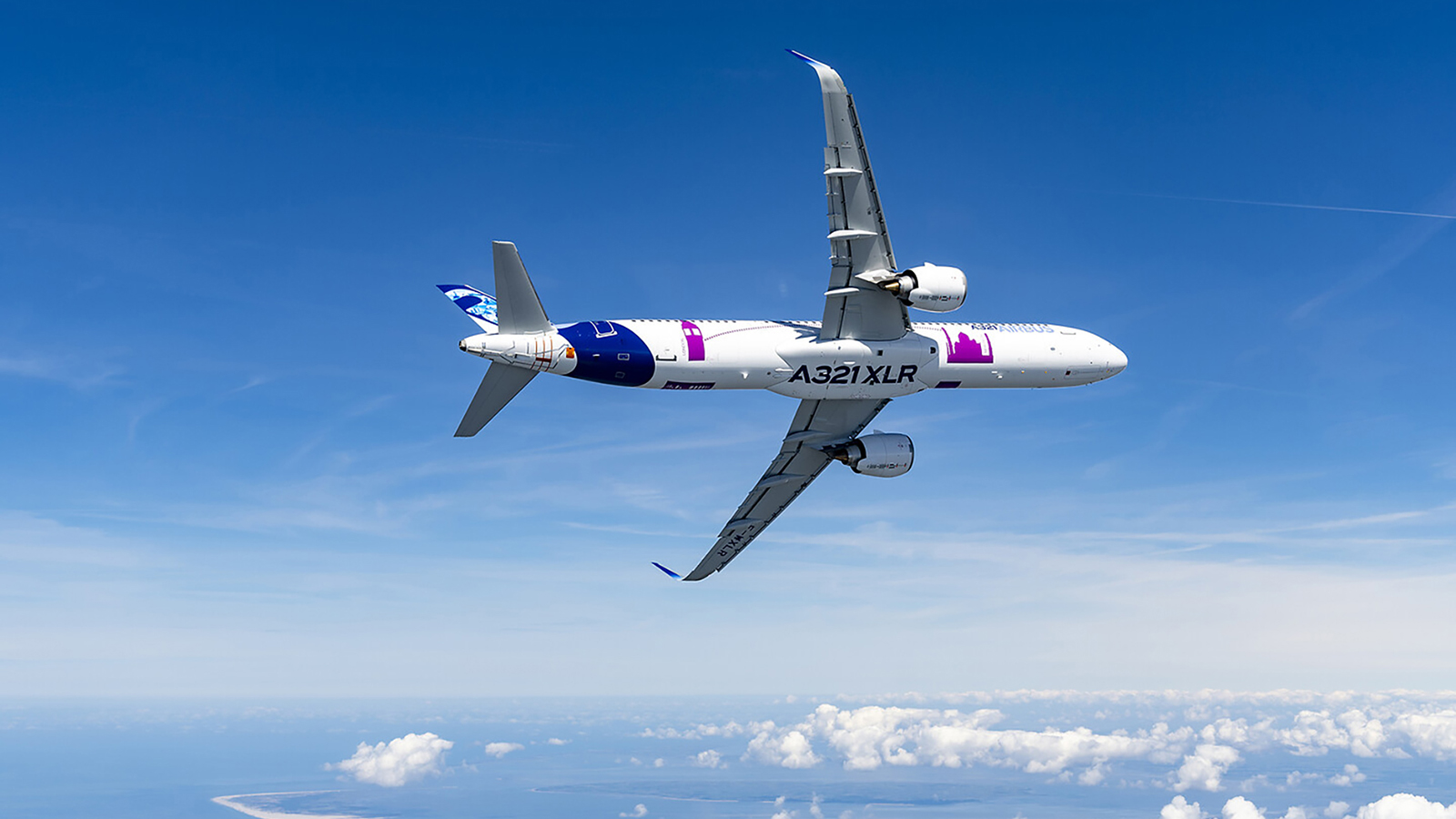Stay Up to Date
Submit your email address to receive the latest industry and Aerospace America news.
The Aircraft Design Technical Committee promotes optimization of aircraft systems, including analysis of their future potential.
Another exciting year of first flights occurred across a broad spectrum of classes and speed regimes. In June, Gulfstream conducted its first flight of the new G800 business jet from its Savannah, Georgia, headquarters. The G800 would be the longest-range aircraft in the company’s history, with a maximum range of 8,000 nautical miles (14,816 kilometers) at Mach 0.85 or 7,000 nmi (12,964 km) at Mach 0.9. Designed to carry as many as 19 passengers, each aircraft would be powered by two Rolls-Royce Pearl 700 engines.
In June, Airbus logged the first flight of an A321XLR aircraft. The four-hour and 35-minute flight from Hamburg, Germany, was the first in a test campaign to achieve certification by the European Union Aviation Safety Agency in 2023. The longer-range variant of the single-aisle aircraft is designed to carry between 180 and 200 passengers up to 4,700 nmi. In January, Airbus also conducted the first flight of its semi-morphing wing C295 Flying Test Bed 2 research aircraft.
The electric aircraft world grew significantly with a number of first flights this year. In June, Germany-based Volocopter conducted the inaugural flight of its four-seat VoloRegion air taxi for regional flights, after completing the first flight of a full-size prototype of its two-seat VoloCity in December 2021. Also in June, Elektra Solar of Germany flew its two-seat aircraft for the first time in a 20-minute flight. In January, Zeva of Washington made the first untethered flight of its electric vertical takeoff and landing aircraft. In June, Israel-based Air completed a series of hover tests with its Air One prototype in preparation for piloted flights early next year. In January, the Nordic Air Racing Team flew its competition electric racing aircraft for the first time as part of its bid to compete in the 2023 Air Race E competition. In April, an all-British team led by Cranfield University flew a two-seat aircraft powered by an electric motor, the Sherwood eKub, as part of an ongoing electric aircraft research program. In April, H2FLY of Germany flew its hydrogen-fuel-cell-powered electric aircraft, the HY4, 124 kilometers from Stuttgart to Freidrichshafen Airport. In September, Washington-based Eviation Aviation flew its Alice all-electric aircraft for the first time. The eight-minute flight occurred at Grant County International Airport in Washington.
In general aviation, Van’s Aircraft of Oregon in July conducted the first flight of the high-wing RV-15. The RV-15 is the company’s first high-wing aircraft and is targeting the backcountry market. In March, the Cessna SkyCourier twin engine utility turboprop achieved FAA type certification. Later in July, the Daher Kodiak 900, a stretched version of the Kodiak 100, also achieved certification.
In military aircraft news, South Korea in July made a 33-minute inaugural flight of a KF-21 Boramae fighter, an advanced supersonic design to replace the aging F-4 and F-5 fighters. In May and July, the U.S. Air Force conducted successful test flights of the AGM-183A Air-launched Rapid Response Weapon. Two DARPA-funded Hypersonic Air-breathing Weapon Concept prototypes made successful flights in April and July.
While new first flights showed progress in the industry, so too did end-of-an-era milestones. In January, Airbus Helicopters delivered the last Eurocopter Dauphin. More than 1,100 of the helicopters were produced since 1972. In March, Bombardier delivered the last Lear Jet, a model 755. Some 3,000 Lear Jet models have been produced. Finally, the last of Boeing’s venerable 747 line, a 747-8F, was scheduled to roll out of the factory in December.
Stay Up to Date
Submit your email address to receive the latest industry and Aerospace America news.




